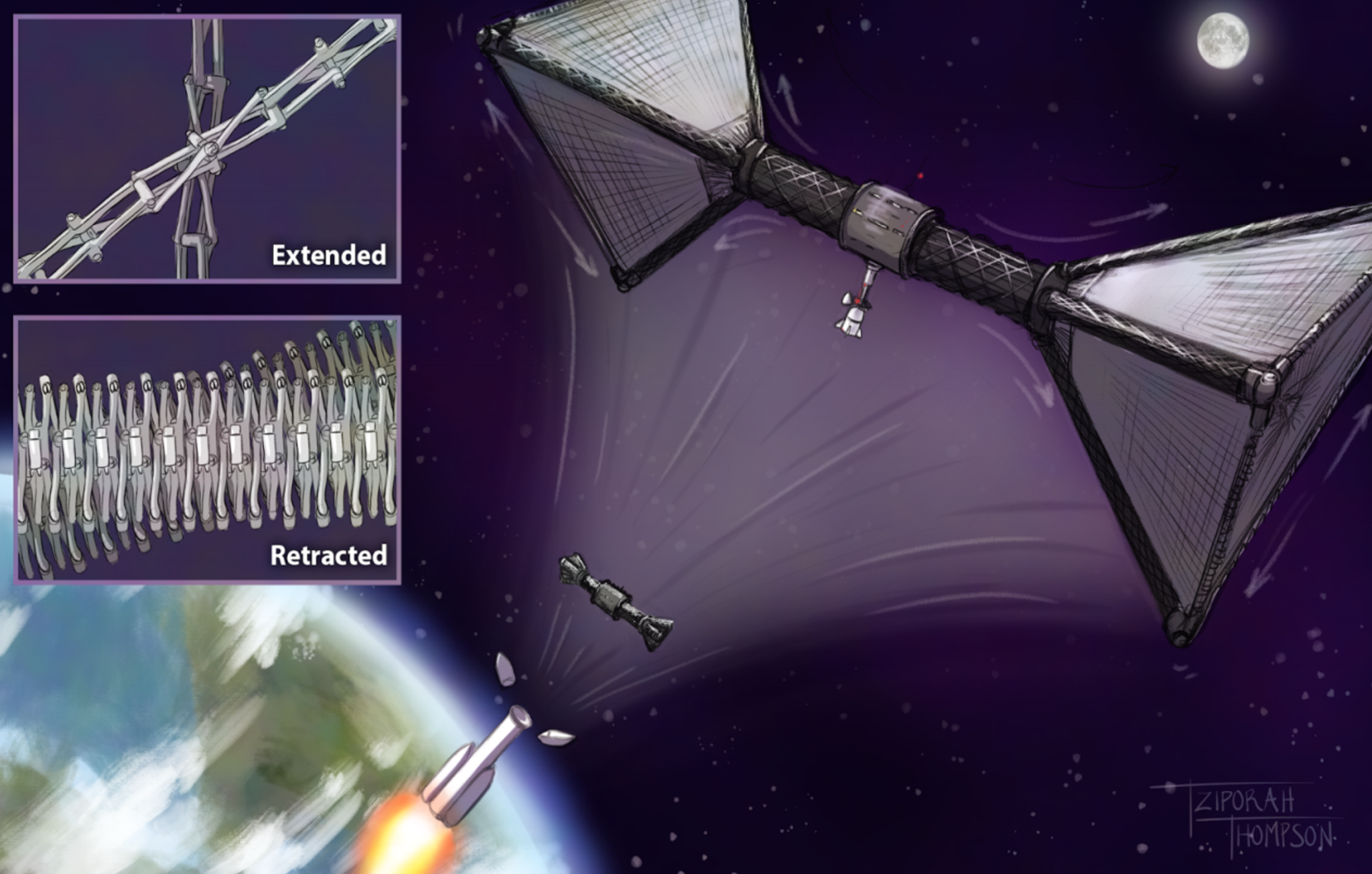Zachary Manchester
Carnegie Mellon University

Long-duration spaceflight poses serious challenges for the human body, including muscle atrophy, bone loss, eyesight degradation, and immunosuppression. Many of these effects are linked to a lack of gravity. Generating artificial gravity inside rotating space habitats has been a dream of science fiction since the earliest pioneers of astronautics. However, rotating to produce artificial gravity poses a serious challenge; Humans experience discomfort and motion sickness when exposed to rotation rates greater than a few RPM. To produce artificial gravity near 1g at rotation rates of 1-2 RPM, a kilometer-scale structure is needed. To address this challenge, we will leverage recent advances in mechanical metamaterials to design lightweight deployable structures with unprecedented expansion ratios of 150x or more. Such a structure could be launched inside a single Falcon Heavy rocket fairing and then be deployed autonomously to a final size of a kilometer or more on orbit without requiring complex on-orbit assembly or fabrication. Our study will analyze a mission concept analogous to the Lunar Gateway, in which a kilometer-scale deployable structure forms the backbone of a large rotating space station.






























